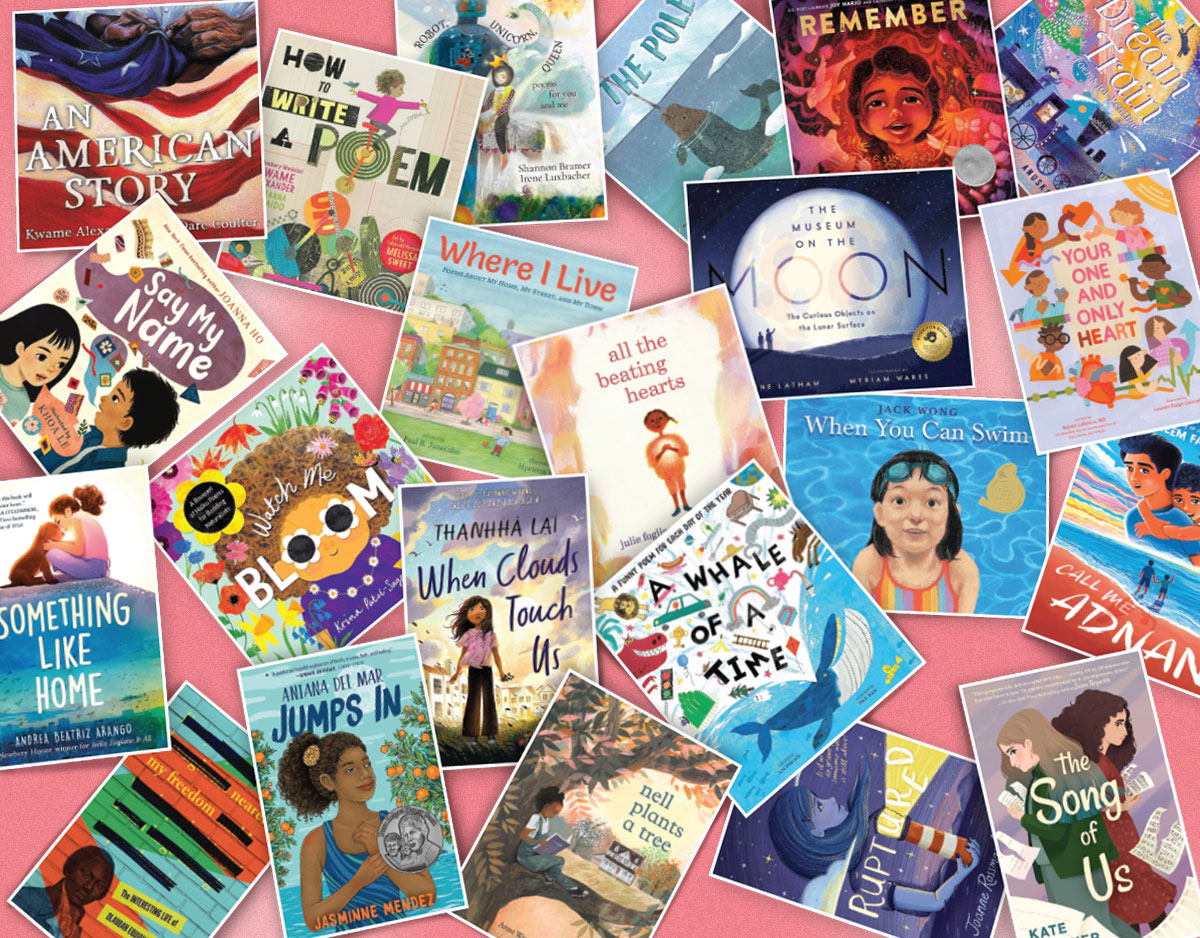SCROLL DOWN TO READ THE POST
Far Far Away: Once upon a time…
 Far Far Away, Tom McNeal
Far Far Away, Tom McNeal
Knopf Books for Young Readers, July 2013
Reviewed from Final Copy
It is perhaps the most polarizing title of the year. Love, hate, and debate about audience have all bubbled up around Tom McNeal’s Far Far Away. A National Book Award finalist, the novel also has five starred reviews and has made four of the year’s best lists; clearly, there is a lot of love for this book. But whenever I discuss Far Far Away with someone who didn’t like it, they don’t just dislike the book, it’s more like disdain.
I’m not one of those people but I’m not quite on the side of adoration either. McNeal’s most prominent theme is story—its power and our lives as stories are two variations that we see in the novel. McNeal’s use of storytelling (specifically, fairy tales) as a major theme is done well enough, but when analyzed with other elements of the novel such as voice, style, and characters, Far Far Away is a book made up of discrete notes that, when played together, make a dissonant sound.
Many of those notes are good enough on their own. There are a couple ways to interpret it, but one reading of the novel’s main theme is that as teenagers are going through the hard work of identity formation, they lack control. Jeremy exemplifies this idea as he is guided and watched over by Jacob Grimm. Similarly, Ginger is not motivated to spend time with Jeremy because of a real interest in him; she has fallen under the spell of the Sten Blix’s Prince Cake (or at least, that’s how I read it). Her decisions are not entirely her own; she is controlled by an adult. Over the course of the novel we see Jeremy begin to assert little bits of control over his own narrative, but ultimately, this is Jacob’s book so we never see Jeremy or Ginger mature. In fact, when they are held prisoner by Sten it is Jacob who brings about their rescue, because it is his story and his actions that drive the narrative.
ADVERTISEMENT
ADVERTISEMENT
The multiple layers of narrative aren’t handled cleanly though so we end up with interesting ideas that don’t work together. Controlling one’s destiny is a powerful young adult theme, but does it work as theme when the young adult characters aren’t actually the characters who fulfill this idea?
Jacob Grimm as first person narrator is probably the sole source of the novel’s dissonance, because although it is technically first person, Far Far Away is functionally third person due to Jacob’s ability to follow any character. At the beginning of the book, it seems that Jacob is going to narrate this story because he just happens to be the friendly ghost/guardian who looks after the abandoned and neglected Jeremy. Jacob, as a historical figure, is significant because of the modern fairy tale style the novel uses so we accept his presence. Then later, it turns out that Jacob has sought out Jeremy to watch over as a kind of penance for his coldness to his nephew. At this point it’s clear that Jeremy and Ginger are merely players in Jacob’s quest to rewrite a past wrong.
In theory, this is a fascinating concept. But the execution lacks the focus necessary to make the themes of storytelling, neglect, and adolescence cohere. While Jacob’s authorial voice is strong throughout the novel, it’s perhaps too strong, too self-consciously an author’s voice. I wanted to care about Jeremy and Ginger, two teens who long to go “far, far away,” but it’s hard to do when they never become living, breathing characters.
That’s not to say that Jeremy and Ginger are poorly written; in fact, they are written to be archetypes–he, the shy boy and she the reckless girl who share a dream of getting out of their town. They are both neglected children in need of saving. They are the characters Jacob needs them to be, but without any depth, it’s hard to get invested in their lives as Jacob has.
ADVERTISEMENT
ADVERTISEMENT
Of course, he’s got a lot at stake with Jeremy as Jacob repeatedly mentions. If McNeal didn’t remind us that Jacob is with Jeremy because he is stuck in Zwischenraum (a kind of purgatory) it might be easy to wonder if there was any point to the story, as the plot meanders along until the sudden decision for Jeremy to try to win the money to save his house on a television game show, Uncommon Knowledge. From that incident, the novel moves quickly to the abduction and through to the resolution. The pacing is definitely a problem but the story also feels padded, as though McNeal put the game show plot in to fill out the story.
That unevenness may also be due to the book’s structure and organization. There are no chapters in Far Far Away, only sections separated by an engraving of a skeleton grabbing a small child. Rereading the text definitely made me more aware of the loose structure, which in theory should work for a novel that is aiming for a fairy tale quality. But as I mentioned before with the themes, the execution is mishandled, mostly because McNeal seems to be aiming for fairy tale and dream-like at the same time. Ostensibly these two styles should dovetail nicely, but fairy tales have a firm structure for a concise plot that is usually thematically rich. Instead, the plot unfolds as though Jacob were recounting a dream he had, stopping in places to provide us with backstory or commentary, and never really going anywhere at all until everything happens at once. This would work if there weren’t so many fairy tale tropes and images throughout the text (the magic cakes, love at first sight, orphaned and lost children, and riddles stood out to me). That’s not even getting into the various ways fairy tales are significant to Jeremy and Ginger.
It doesn’t hold up to intense scrutiny but I still admired everything McNeal attempted to do with Far Far Away. The pieces that don’t quite add up are there because this novel doesn’t succeed as metatext, or as a young adult narrative, or as a fairy tale, but it is certainly a book that has lingered in my mind. I keep coming back to that main theme of storytelling. As readers, story is part of our daily existence, but McNeal tries to show us that we’re all the authors of our own story. While it will remain an imperfect work, that theme will always stand out to me as one of the most interesting ideas in a YA novel this year.
I didn’t talk about the town of Never Better, but what did you think? Intentionally vague or beautifully anytown? And how about Possy, the missing child, or McRaven, the secretly lovesick deputy? What did you think about McNeal’s tertiary characters (and their names!)? Let’s discuss in the comments!
Filed under: Books to look for, Contenders, Fiction
About Joy Piedmont
Joy Piedmont is a librarian and technology integrator at LREI - Little Red School House & Elisabeth Irwin High School. Prior to becoming a librarian, Joy reviewed and reported for Entertainment Weekly’s PopWatch. She reviews for SLJ and is the President of the Hudson Valley Library Association. When she’s not reading or writing about YA literature, she’s compulsively consuming culture of all kinds, learning to fly (on a trapeze), and taking naps with her cat, Oliver. Find her on Twitter @InquiringJoy, email her at joy dot piedmont at gmail dot com, or follow her on Tumblr. Her opinions do not reflect the attitudes or opinions of SLJ, LREI, HVLA or any other initialisms with which she is affiliated.
ADVERTISEMENT
SLJ Blog Network
One Star Review, Guess Who? (#202)
Review of the Day: My Antarctica by G. Neri, ill. Corban Wilkin
Exclusive: Giant Magical Otters Invade New Hex Vet Graphic Novel | News
Take Five: LGBTQIA+ Middle Grade Novels
The Classroom Bookshelf is Moving
ADVERTISEMENT
ADVERTISEMENT







